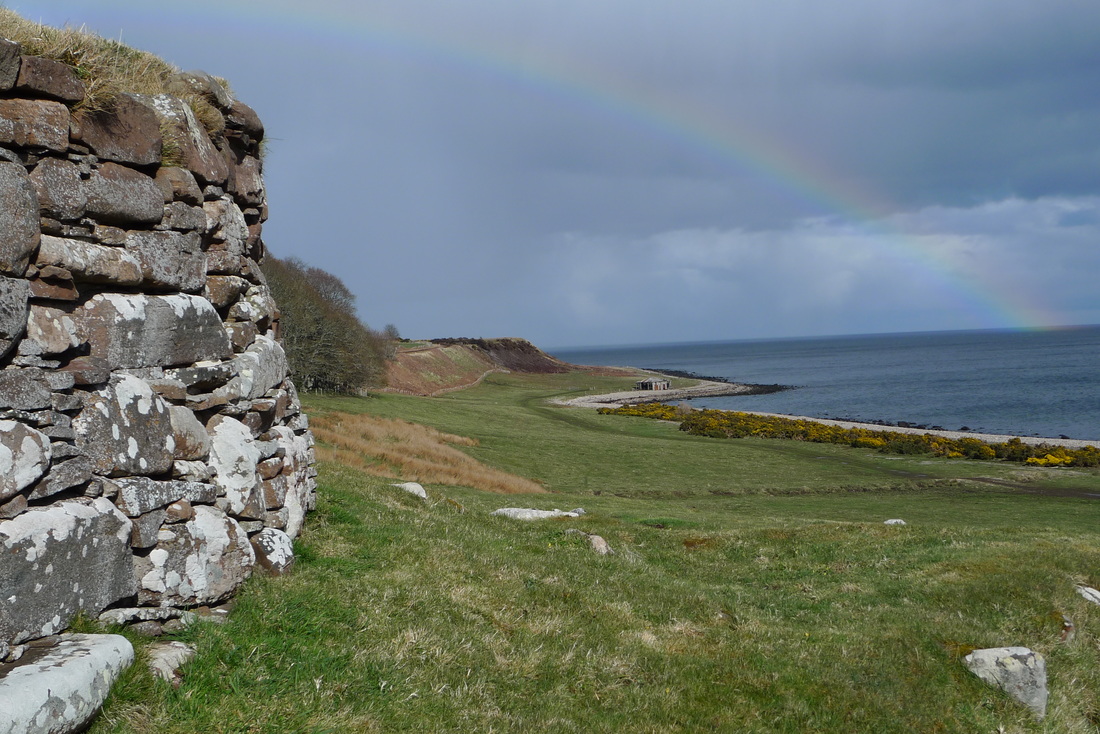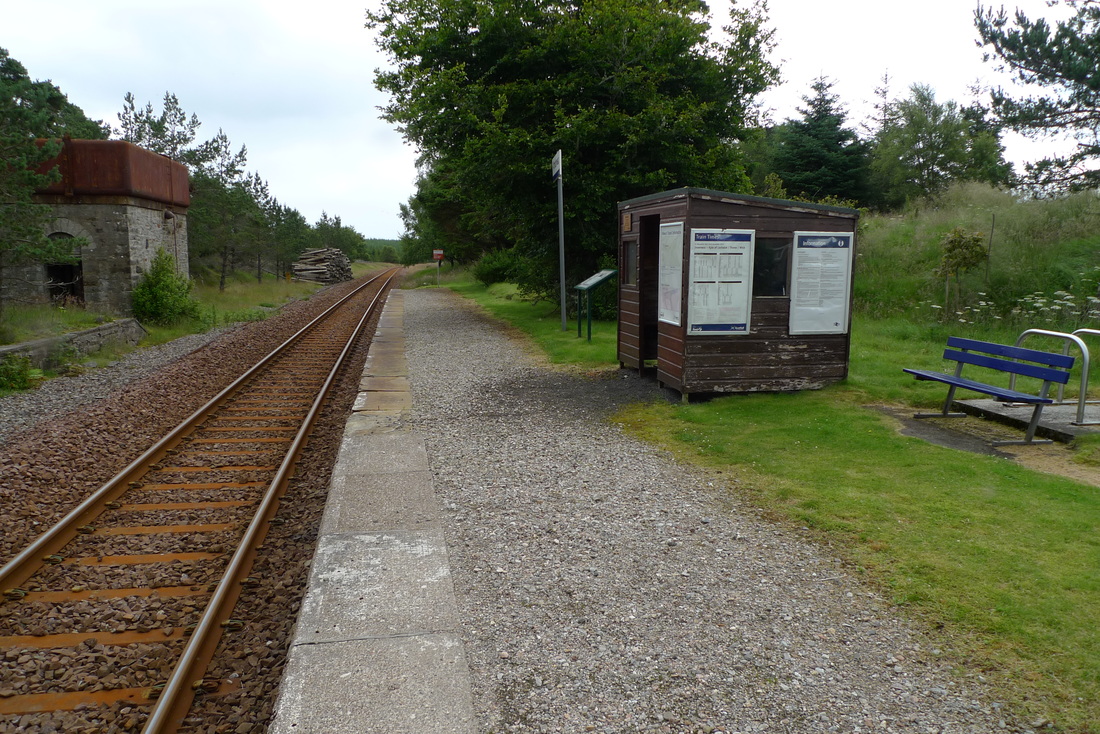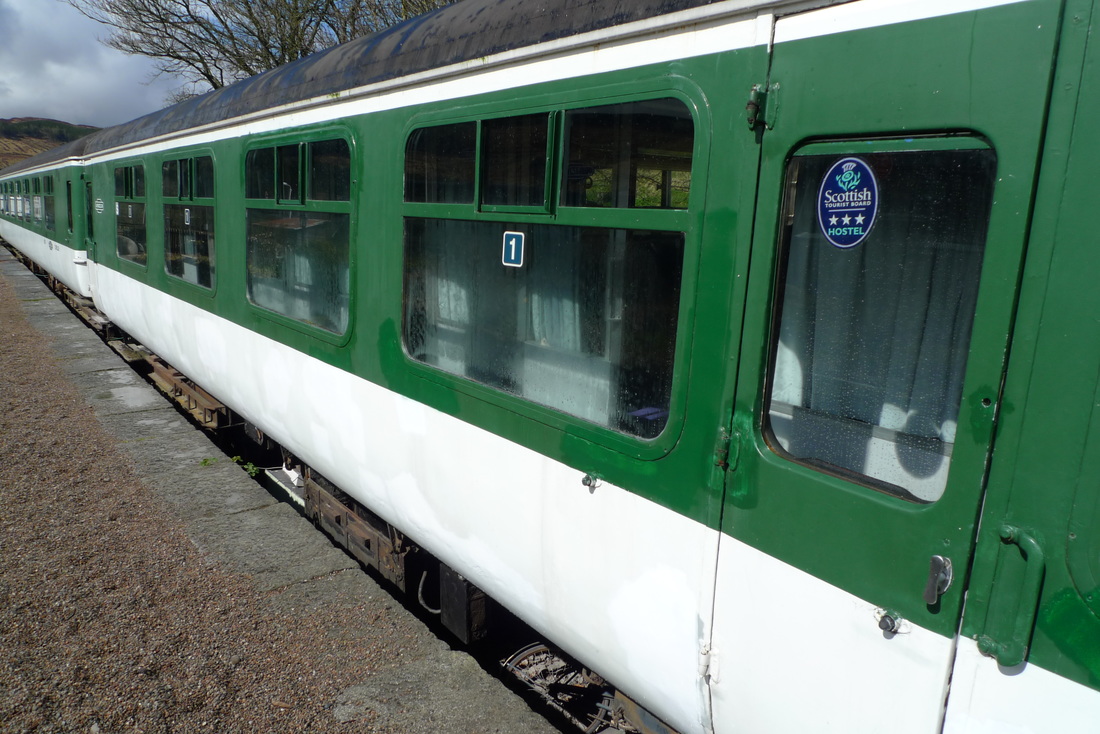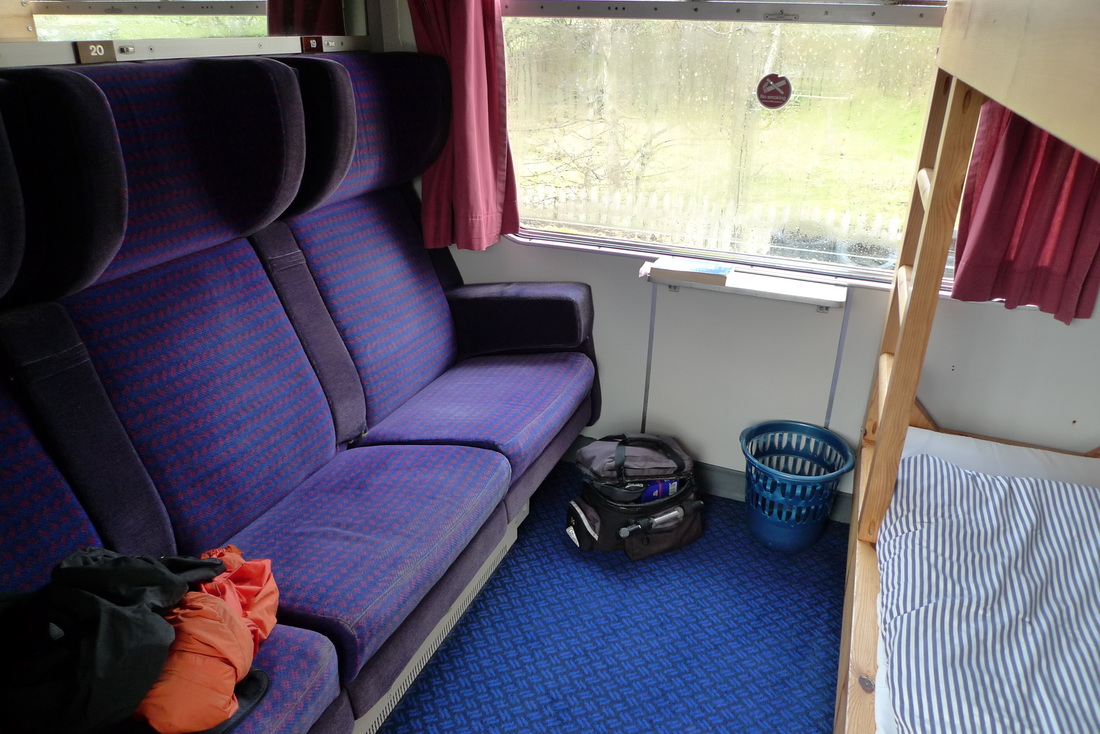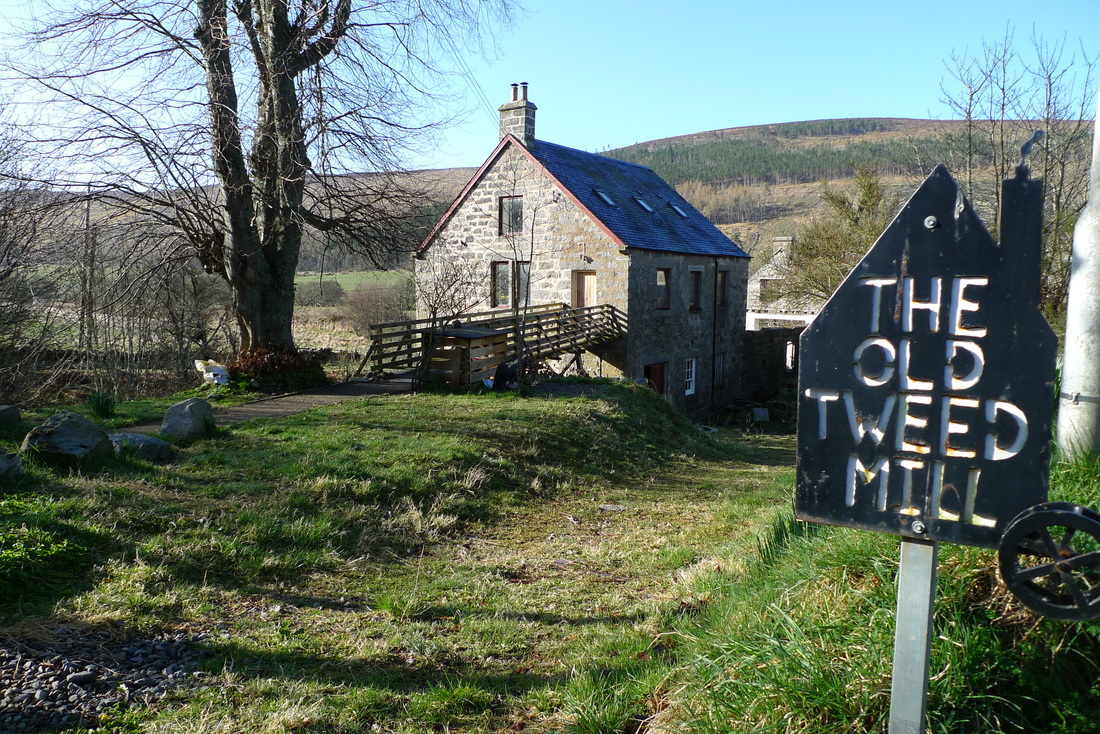|
Are you looking for a Scottish loch that you can have all to yourself? Somewhere with no hotels, resorts or visitor attractions? Loch Brora in Sutherland, 60 miles north of Inverness, is the ideal place. It is remote, beautiful and has no tourist infrastructure.
Scotland's most famous lochs, the ones in the tourist brochures, the ones that songs have been written about, the ones that feature on television programmes can be busy places. Yes, it is easy enough to find quiet and isolated spots along Loch Ness or Loch Lommond, but what about an entire loch that is undeveloped? Loch Brora is three miles long and the entire length of it is untouched. The only people who regularly come to Loch Brora are fishermen and there are few of them. If you do an Internet search you will find very little, some references to the fishing, but certainly no hotels, towns or villages.
Loch Brora is located down a single-track road, leading away from the busy A9 road, not too far from the towns of Golspie and Brora. The road is little used as there are very few houses in this area.
This road is ideal for cycling because of the low volume of traffic and the spectacular scenery. You could take your bike on the train to Rogart (2 hours north of Inverness) and stay the night at Sleeperzzz, a collection of old railway carriages converted to accommodation.
Pack yourself some lunch and pick a spot to gaze out upon the loch and the huge, barren hillside on the opposite shore. You will not be disturbed and will hear little apart from the wavlets lapping the shore.
Loch Brora features in my travel feature Cycling the Strath.
0 Comments
I was lucky to be visiting the broch at the moment when a rainbow appeared on the horizon. It provided a dramatic backdrop to this Iron Age stone structure. The location is spectacular with the curving beach and expanse of the North Sea.
What are brochs? They are circular, stone towers dating from the Iron Age. They are unique to Scotland and you will not find them anywhere else. There are over 500 of them in Scotland with most located in the north; if you are cycling in this area there is a very good chance that you will see some. The purpose of brochs is debated, some archaelogists claiming them to be defensive structures where families and livestock lived. Some say that they were castles or simply grand homes where the wealthiest families lived.
There is only one entrance to a broch, a narrow door where you must bend down to pass through. Carn Liath's entrance is in good condition with the lintel still in place, so you still have to bend down to get inside.
Entering Carn Liath Broch
After ducking down under the door lintel there is a small chamber to the right that might possibly have been a tiny guard room from which the entranceway could be defended. Once inside the central area it feels quite large and now has a neat covering of grass. Directly opposite you will notice another entranceway. This leads to a staircase with clumps of moss and slippy in the rain. This staircase once went all the way to the top of the broch, but now takes you to a rim from which you get good views of the sea and surrounding hills.
The location
Unfortunately the dominant sound is the traffic from the adjacent A9 road, but this also makes it easy to get to. It is about 3 miles east of Golspie, 1 mile from Dunrobin Castle. The A9 is not the most pleasurable road for cycling, but there is no other way to reach the broch and if you are confident in traffic it is worth putting up with the busy road. There is a good chance that you will meet a herd of cows at the site; they love the grass here. They might even be blocking the entranceway to the broch, but they will make way for you. The coastal location is stunning and there is sandy beach, the expanse of the North Sea aInd hills on the horizon. Incredible construction What always impresses me the most about brochs is the intricacy of the stonework. No masonry was used and many diffrent sizes and shapes of stones were perfectly laid together to interlock them and make the structure solid. It is worth taking a closer look at the stone to admire this work and marvel at how it has stayed intact for thousands of years.
I visited Carn Liath Broch during my cycling trip to Strath Brora. During this trip I stayed overnight in some old railway carriages, converted to accommodation, at Rogart station.
This book tells the story of request stop train stations, a quirky feature of Britain's rail network. Dixe Wills travels to 38 of them and explores the areas surrounding the stations. It is an entertaining journey with the author's quirky sense of humour appropriate for the curious history of the stations.
Trains do not automatically stop at request stops and will roll straight through unless a passenger indicates that they want to get on or off. If you are on the platform you must hold out your arm to get the train to stop. If you are on the train you have to tell the guard that you wish to get off. There are over 150 request stops in Britain (equating to 6 per cent of all stations). I have used several request stops during my cycling trips and Dixe Wills also brings his bicycle along on many of his visits to the stations. Like me, he found that having a bike is a great way to explore the quiet roads and rural locations that are often characteristic of request stop stations. He beautifully captures the pleasure of cycling in a summer evening in the chapter about Bootle station in Cumbria: "Cycling through the countryside on a bright cool night is such a joy and such a deeply sensual pleasure that I feel sad for anyone who hasn't experienced it. Noises that get lost in the hubbub of the day sing out across a stage emptied of humdrum rivals. The calls of night-flying birds, the cry of a fox, the sudden squabbling squall of a cat fight, the fearful yelps of lambs and the reasuring responses of their mothers...Smells, scents and aromas rise up out of the ground to launch a sneaky nocturnal assault on your nostrils. On my way up I breathed in newly mown grass, the last of the season's wild garlic...You become more aware of the breeze on your face, the breaths you take in as you take on a climb, the reassuring whir of your rubber on tarmac. It's like being alive, only a great deal more so." The book features five stations in Scotland. I was particularly interested in Dixe's visit to Altnabreac station, one of the best places that I have taken a bike trip. His encounter is somewhat more dramatic than mine when he knocks on the door of a former hotel and has a bizzare encounter with the owner. This was my favourite part of the book, a real page turner, and I will not spoil it for you by saying anything more about it. In fact, Dixe has many adventures during his railway journeys which adds plenty of drama to the book. Some people may not enjoy the author's sense of humour and very personal touch, but it had me smiling and I identified with his happy-go-lucky approach to travelling. For example, he admits to always underestimating how much time is required to get to a place and having to run very fast to avoid missing trains and this is the main means by which he keeps fit and gets exercise. I previously reviewed another of Dixe Wills' books- Tiny Islands. It is a very different book to Tiny Stations in terms of the layout with maps and beautiful photography, but a similar "tiny" theme. Tiny Islands is much more of a practical travel guide and you can use this to plan journeys to the islands, whereas Tiny Stations is more of a travel novel and if you want to follow the journeys you will need to do your own planning. Both books are inspiring and you will want to make your own trips to the tiny islands and tiny stations of Britain after reading them. Stay in old railway carriages in the Scottish Highlands. Review of Sleeperzzz in Rogart, Sutherland1/6/2015
If you love a bit of railway nostalgia or just want to stay somewhere unique that you will remember for years to come then this is the place.
A collection of 1969 railway carriages have been converted into overnight accommodation at Rogart station. The compartments have bunkbeds on one side and the original British Railways seating on the other side. One of the compartments is now a kitchen so that you can cook your own meals. The compartments are cosy and even have the original under-seat heating systems. I like that they have kept the seating so that you get an authentic feeling of being on a train. These seats are extremely comfortable and there is nothing on today's trains to match their quality. You can pull down the armrests and sink back with a good book and a smoky single malt. It is not only the seats that have been retained. You will find plenty of the original signage and even the emergency pull cords. And to get into the carriage there is the sturdy door which you can give a satisfying slam, a sound that once echoed within railway stations across the country. If the carriages are not unique enough for you then there is also a Bedford bus and a 1930s fairground showman' s wagon. These can accommodate 3 people, so ideal for couples or a family.
The location of Sleeperzzz makes this place even more special. Rogart station is about 2 hours north of Inverness on the Far North Line. This is rural, lightly populated country and the train will only stop at Rogart if you "request" it- showing the guard your ticket so that he or she will ask the driver to stop and let you off. If you don't do this the train will speed right through the station. There is a 10 per cent discount if you arrive by train or bicycle.
This video captures the excitement of arriving and departing at Rogart by train. It provides a great view of the carriages and other railway paraphernalia at Rogart:
This is a great place to bring a bicycle because there are miles of single track roads to explore. There are also several walks in the area. This is a tranquil place and if you want solitude you will find it here.
The only place to go out for a meal in Rogart is the Pittentrail Inn, a two-minute walk from Sleeperzz. It serves bar meals, but it is worth checking in advance if they will be open during your visit. Golspie, ten miles away and the next stop on the line, is the place to go for supplies if you are going to use the kitchen facilities at Sleeperzzz. The town has a good selection of shops, cafes, pubs and restaurants. Sleeperzzz is clased as hostel accommodation, so this is good value for money. It is not luxury, but it is lots of fun and in a stunning part of Scotland. Campsites.co.uk is also a great place to find railway carriage holidays with more than 10 to choose from. |
|








